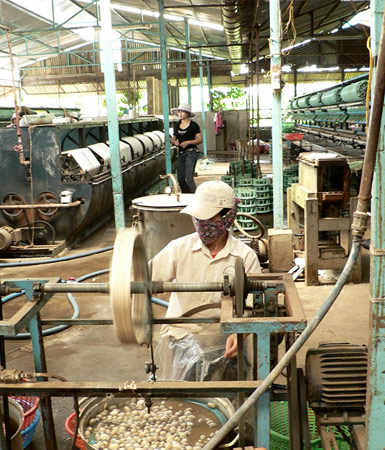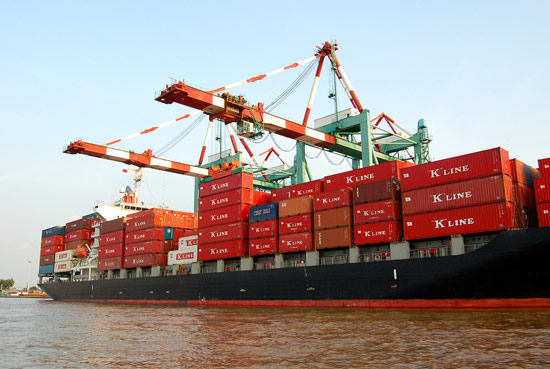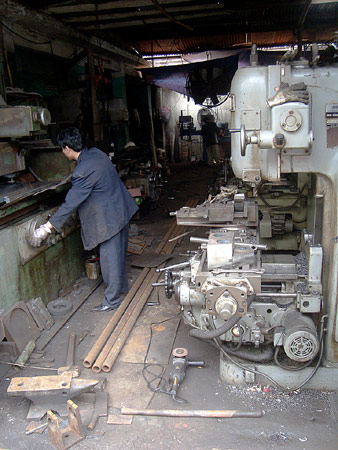Trade Overview
After centuries of external and internal strife, Vietnam emerged as a dynamic, developing nation with one of Southeast Asia’s fastest-growing economies. Poverty has dropped significantly, and the government has worked to create jobs to meet the challenge of an expanding labor force. Vietnam’s 2001 entry-into-force of the Bilateral Trade Agreement with the US was a significant step for Vietnam's economy, and bilateral trade between the two countries has risen dramatically. To meet the obligations of World Trade Organization (WTO) membership, Vietnam revised the majority of its trade and investment laws and opened up large sectors of its economy to foreign investors and exporters. Though the 2008 global recession hurt Vietnam's export-oriented economy, government efforts brought the trade deficit into balance and exports increased by more than 12 percent in 2013. However, the government's strong growth-oriented policies also resulted in a struggle to control one of Asia’s highest inflation rates.
Trade History
Prior to the French takeover in the mid-19th century, agriculture drove Vietnam’s economy. In addition to developing plantation agriculture, French economic policy also exploited coal, iron, and nonferrous metals. The development of exports—coal from the North and rice from the South—and imports of French-manufactured goods stimulated internal trade, with rice-heavy South Vietnam commonly trading its principal crop for North Vietnamese coal.
After gaining independence from France in 1954, the country maintained its economic divisions, with North Vietnam focusing on heavy and light industry, and the South focusing on agriculture. During the late 1960s, the war with the US resulted in power interruptions, the destruction of petroleum storage facilities, the disruption of transit routes, and labor shortages, which seriously affected trade. Following the war, Vietnam developed a unified, state-run economy, however economic stagnation plagued the country, and trade remained limited.
To compensate for drastic cuts in Soviet-bloc support after the 1989 collapse of the Soviet Union, Vietnam liberalized trade, devalued its currency to increase exports, and embarked on a policy of regional and international economic reintegration. In the years that followed, Vietnam signed several comprehensive international trade agreements, including the Association of Southeast Asian Nations (ASEAN) Free Trade Area and the US-Vietnam Bilateral Trade Agreement. Vietnam's WTO membership further integrated Vietnam into the global economy.
Top Export Partners
The US buys 18 percent of Vietnam’s exports, Japan buys 12 percent, China 11 percent, South Korea 5 percent, and Malaysia 4 percent.
Major Export Products and Services
Exports account for more three-quarters of Vietnam’s GDP, with chief export products comprising rice, clothing, textiles and shoes, marine products, crude oil, electronics, wood and wood products, and machinery.
Top Import Partners
Vietnam purchases about a quarter of its imports from neighboring China, 14 percent from South Korea, 10 percent from Japan, 6 percent from Singapore, 5 percent from Thailand, and nearly 4 percent from the US.
Major Import Products and Services
Industry, services, and agriculture drive Vietnam’s economy, and imports comprise machinery and equipment, petroleum products, steel products, raw materials for the textiles and shoes industries, electronics, plastics, and automobiles.
Barriers to Trade (Tariff and Non-Tariff)
Vietnam ranks 148th place out of 178 countries in the Heritage Foundation’s Index of Economic Freedom. Vietnam’s weighted average tariff rate is more than 5 percent. Although the government has made progress in liberalizing trade since joining the WTO, numerous non-tariff barriers add to the cost of trade. Vietnam’s non-tariff barriers include import bans and restrictions, services market access barriers, import licensing requirements, non-transparent regulations, state trade in some commodities, weak enforcement of intellectual property rights, corruption, and customs inconsistencies.
Major Ports
Vietnam’s major ports include Saigon Port, SSA International Terminal Cai Mep, and Da Nang Port.
Article written for World Trade Press by Erin Eaton-Zaleski .
Copyright © 1993–2025 World Trade Press. All rights reserved.

 Vietnam
Vietnam 



